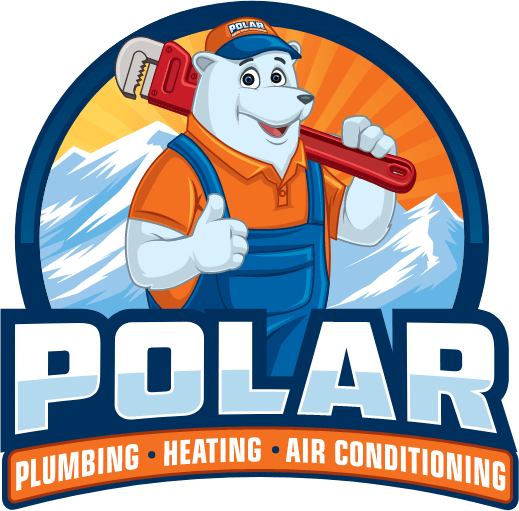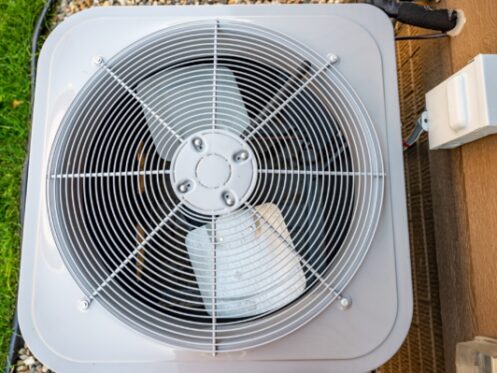Installers place a heat pump outside the home as part of the HVAC system. It cools the home, similar to an air conditioner. However, unlike an air conditioner, a heat pump can also provide heat.
In winter, the heat pump pulls heat from the cool outdoor air and moves it indoors. During summer, it extracts heat from indoor air to cool the home. Heat pumps rely on electricity. They don’t generate cooling or heat. Instead, they use electricity and refrigerant to transfer heat, ensuring year-round comfort.
Because a heat pump handles both cooling and heating, homeowners in moderate climates might not need separate heating and cooling systems. Heat pumps don’t rely on fossil fuels, making them an eco-friendly choice.
Basic Information About Heat Pumps
People commonly use two types of heat pumps for residential purposes: air source and ground source. Air source heat pumps exchange heat between indoor and outdoor air. Ground source heat pumps, also known as geothermal heat pumps, transfer heat between indoor air and the ground outside. They require a higher installation cost but operate more efficiently because the ground temperature remains consistent at certain depths, irrespective of outdoor temperatures.
How Heat Pumps Work
Heat pumps extract heat from a source like the surrounding air and amplify it before transferring it where needed. Since most of the heat a heat pump transfers rather than generates, they prove highly energy-efficient compared to electric heaters, boilers, or furnaces. For instance, a heat pump’s coefficient of performance (COP) stands around four, meaning it produces four times more energy than the electricity it consumes. This makes modern heat pumps up to five times more energy efficient than gas furnaces. In extremely cold areas, people often use heat pumps alongside gas furnaces.
A heat pump contains a compressor that cycles refrigerant and a heat exchanger that captures heat from the source. This heat then moves to a heat sink through another heat exchanger. The system delivers this heat to its intended location using forced air or hydronic systems. Heat pumps can also connect to a tank for warm water production and provide space cooling in summer.
Outdoor Unit
The outdoor unit of a heat pump includes a fan and a coil. In heating mode, the coil acts as an evaporator. In cooling mode, it serves as a condenser. The fan facilitates heat exchange by blowing outside air over the coil.
Indoor Unit
The indoor unit, often termed the air handler unit, comprises a fan and a coil. This coil functions similarly to the one in the outdoor unit, depending on whether the goal is cooling or heating the indoor space.
Refrigerant and Compressor
Refrigerant absorbs and releases heat while circulating through the heat pump system. The compressor pressurizes this refrigerant, propelling it throughout the system.
Reversing and Expansion Valve
The reversing valve changes the refrigerant flow direction, allowing the system to either cool or heat based on homeowner requirements. The expansion valve serves as a metering device, controlling refrigerant flow and regulating its pressure and temperature as it moves through the system.
The Second Law of Thermodynamics
The second law of thermodynamics dictates that heat transfer naturally occurs from higher to lower-temperature bodies. Heat pumps capitalize on this principle by placing heat in contact with cooler, low-pressure environments to enable natural heat transfer.
To cool a home, the refrigerant passes through the indoor coil’s expansion device, functioning as an evaporator. Indoor air flows across this coil, allowing the refrigerant to absorb heat and cool the air. The resulting warm refrigerant turns into a gas and travels to the compressor, where it gets pressurized and heated. The hot, pressurized gas then moves to the outdoor unit.
A fan pushes air across the heated coils in the outdoor unit, transferring the refrigerant’s heat to the outside air. As a result, the refrigerant condenses back into a liquid state, cools down, and returns to the indoor unit through the expansion valve. Here, the expansion valve reduces the liquid’s pressure, further cooling it, and the cycle repeats.
For heating, this process reverses, with warm air directed into the home’s duct network rather than outside.
Why a Heat Pump Is a Great Option for Year-Round Comfort
Investing in a heat pump is a good idea for homeowners who want to enhance the comfort of their home, minimize their carbon footprint, and save on energy costs. Heat pumps have several features and benefits that make them a great investment.
Year-Round Comfort
One of the biggest advantages of heat pumps is that they can provide heating and cooling. This means that during the winter, your home is warm, and during the summer, your home is cool. You get rid of the need for separate heating and air conditioning systems.
Versatile
Heat pumps come in different types based on climate conditions. In areas that have moderate winters, an air-source heat pump works great. However, ground-source geothermal heat pumps are a better option if you live in an area with very cold winters.
Energy Savings
Since heat pumps transfer heat as opposed to generating it, they are energy efficient and save more money than traditional HVAC systems. This means that homeowners are spending less on their energy bills.
Possible Rebates
Government rebates may make the initial investment in a heat pump more affordable. Several programs provide rebates for energy-efficient home improvements, with many more slated to be introduced in 2024. Some of these benefits extend to heat pump installation.
Reduced Carbon Footprint
Heat pumps produce fewer greenhouse gas emissions compared to systems that need fossil fuels like traditional air conditioners and furnaces. This is an environmentally friendlier option that aligns with many individuals’ emphasis on environmental responsibility.
Quiet Operation and Low Maintenance
Heat pumps have a very quiet operation. This means that the indoor environment is peaceful. Although heat pumps require regular maintenance and inspection, the amount of maintenance needed is relatively low when compared with traditional HVAC systems.
Possible Increased Home Value
Newer models of heat pumps are extremely energy efficient, and potential homebuyers enjoy these energy-efficient features. In certain areas, having a heat pump can be an attractive selling point.
Reliable Performance
Heat pumps do an excellent job of maintaining a consistent indoor temperature, regardless of the outdoor conditions. This ensures that home occupants are comfortable year-round.
Zoned Comfort
Ductless mini-split heat pumps give an additional level of control and customization. They make it possible for homeowners to establish temperature zones in the home. This means they can cater to the preferences and needs of different individuals in the home. This further reduces energy waste, ensuring that you only heat or cool the rooms that are being used.
Transparent HVAC and Plumbing in Newburgh
At Polar Plumbing, Heating & Air Conditioning, we have provided trustworthy HVAC and plumbing services in Newburgh, New York, for several years. We are a Better Business Bureau accredited business and are BNI and ACCA members. As an award-winning company, we proudly provide first-class plumbing and HVAC services that cannot be matched. Our focus is transparent pricing for all services, so you know you’re getting the best value for your home.
Our services include HVAC repair, installation, and maintenance. We offer toilet repair and installation, faucet repair and replacement, drain cleaning, garbage disposal installation, pipe repair, leak detection, sulfur systems, and more. Contact Polar Plumbing, Heating & Air Conditioning today and enjoy the peace of mind that comes from knowing that no matter what, you’re getting the best value in the Newburgh area.

